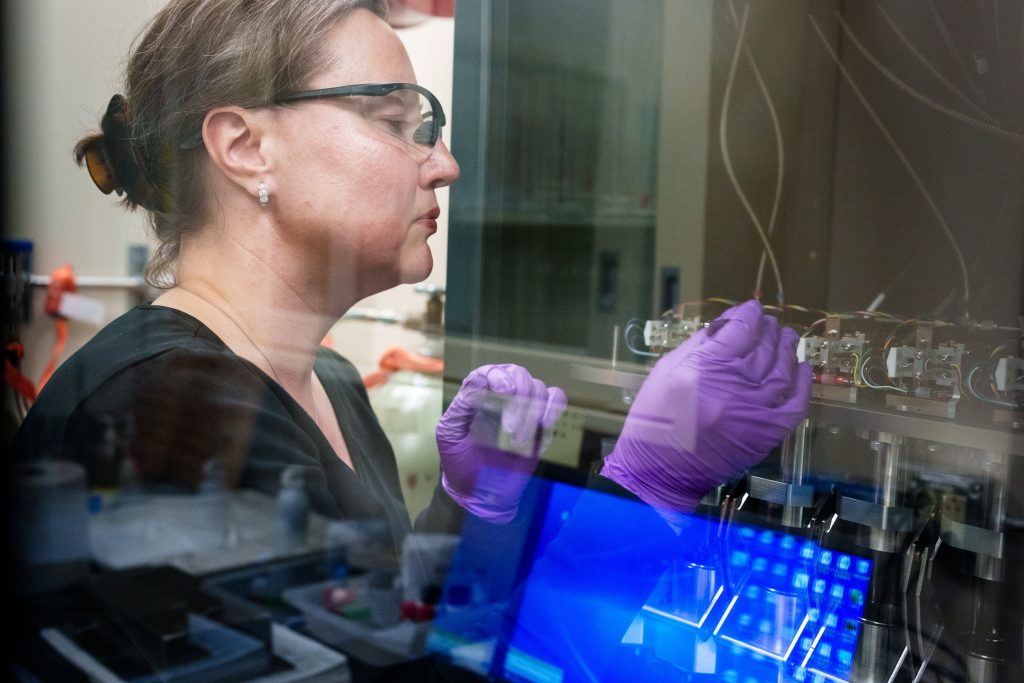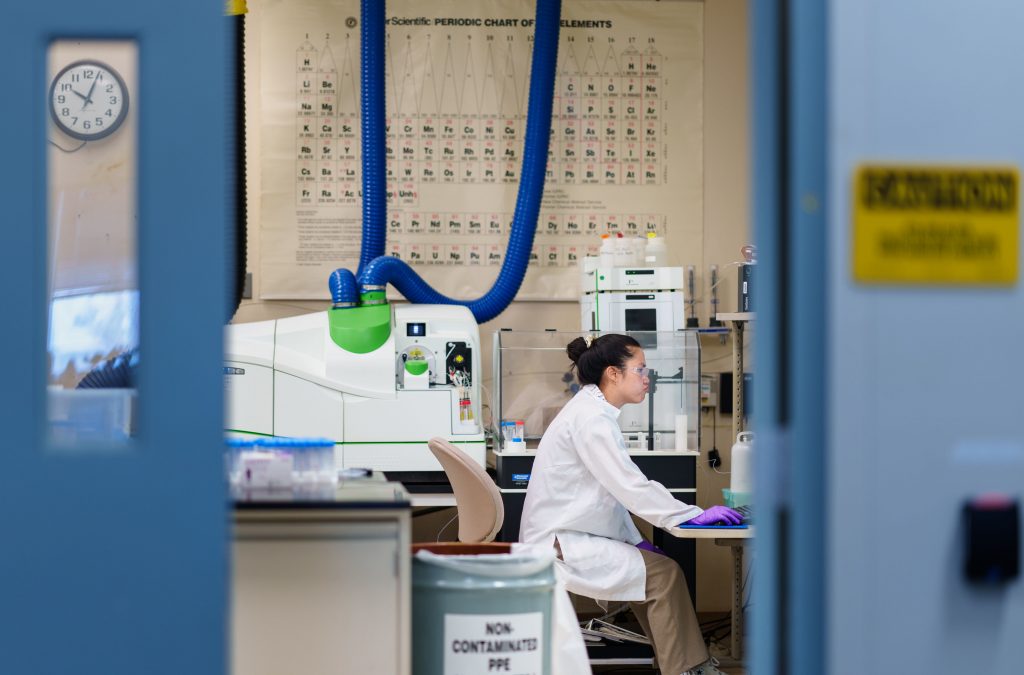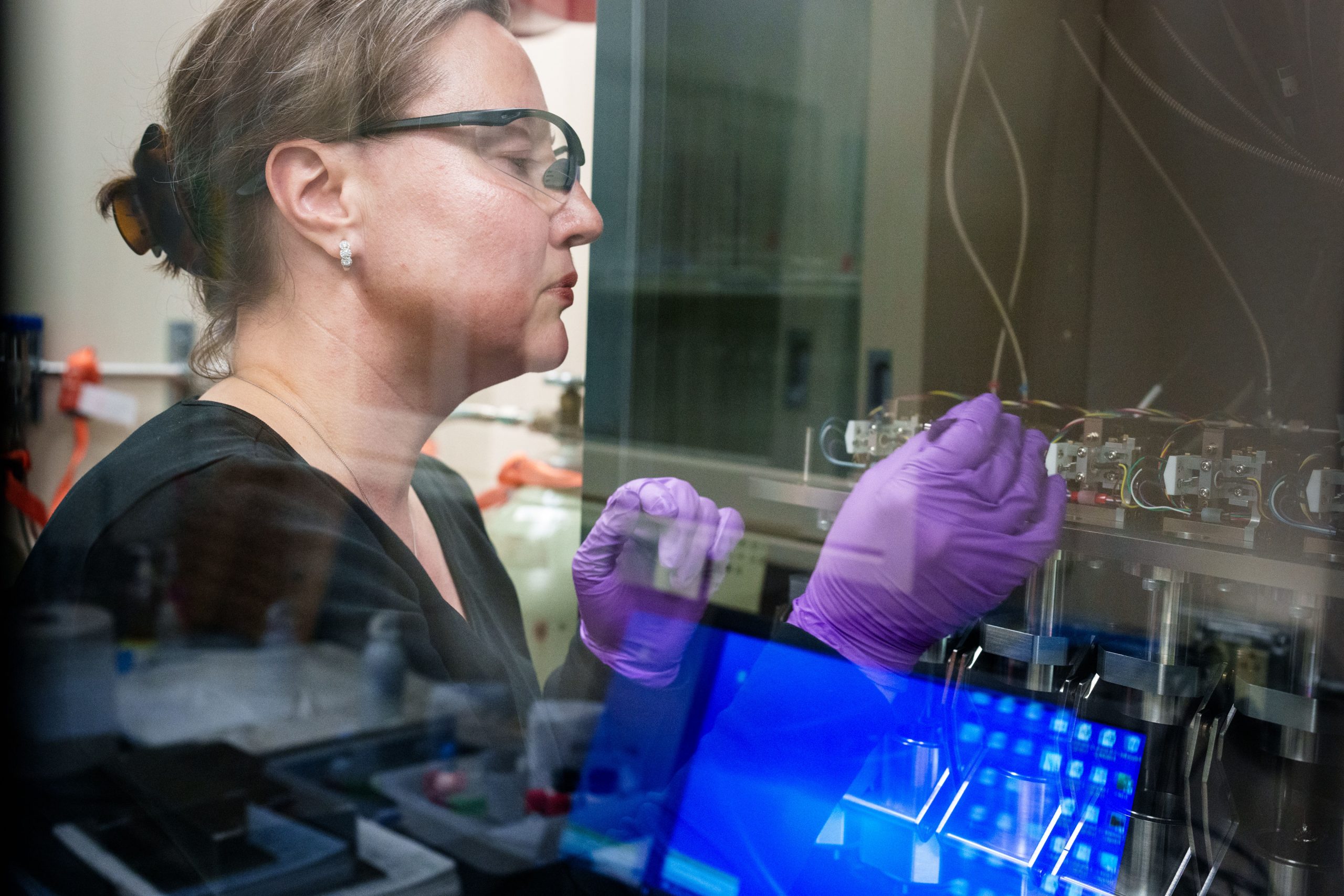ALBUQUERQUE, N.M. — Rare-earth elements are everywhere in modern life, found in everything from the smart device you’re reading this on to the LED lightbulbs overhead and neodymium magnets in electric vehicles and wind turbines.

However, purifying these critical metals from ores with complex mixtures is a nasty business involving strong acids and hazardous solvents, and is primarily conducted in China. Over the past three years, a team of researchers from Sandia National Laboratories has been pioneering an environmentally friendly method to separate these rare-earth elements from watery mixtures.
Initially, the team made and modified tinker-toy-like molecules called metal-organic frameworks or MOFs to test their ability to adsorb these vital metals. They then used computer simulations and X-ray-based experiments to investigate how the rare-earth elements interact with the synthesized “sponges.” The team’s ultimate goal is to design sponges that selectively absorb one rare earth metal while excluding others. Their findings were recently published in a series of scientific papers, including one in the scientific journal ACS Applied Materials and Interfaces on August 26.
“We synthesized MOFs with variable surface chemistry and were able to show through adsorption experiments that these MOFs can pick out rare-earth elements from a mixture of other metals,” said Anastasia Ilgen, a Sandia geochemist and project lead. “They are more selective for the rare earths — that’s good. Importantly, we illustrated that their ability to pick out metals can be fine-tuned by adding chemical groups on their surfaces.”
Synthesizing stable sponges
The researchers selected two zirconium-based tinker-toy-like MOFs for the project. These MOFs are highly stable in water and easily adjustable, according to Dorina Sava Gallis, a Sandia materials chemist involved in the project.
MOFs consist of metal “hubs” and carbon-based linker “rods,” which can be interchanged to create nanosized “sponges” with different properties. Also, chemists can add different chemical groups within MOFs to modify their properties or engineer structures with missing rods, Sava Gallis said.
In their study, published in the scientific journal Chemical Communications, Sava Gallis and her team experimented with two types of MOFs featuring zirconium hubs. They attached new chemical groups to the linkers in one MOF building block, while attaching them to the metal hub in another.

Sandia National Laboratories intern Kadie Marie Mei Sanchez works on a mass spectrometer used for quantifying the concentration of metals, such as the rare-earth elements separated by the tailored MOFs. (Photo by Craig Fritz) Click on the thumbnail for a high-resolution
The team found that the MOFs with missing linkers bound more of the two rare-earth elements compared to those without missing linkers, as expected. The addition of an amino group to the linker had minimal impact on the adsorption of any of the metals. However, incorporating a negatively charged chemical group called phosphonate into the linker improved the adsorption of all the metals. Interestingly, in the MOF structure where the chemical groups were attached to the metal hubs, the additional chemical groups did not make much of a difference on the adsorption of the rare-earth elements. However, they greatly increased the selectivity for nickel over cobalt, Sava Gallis said.
“We are seeing that both approaches we implemented effectively tune the selectivity for different ions,” Sava Gallis said. “We’re looking into designing new materials, combining the knowledge we have gained from studying these two material systems, to intentionally tailor the adsorption selectivity for each metal of interest.”
Modeling molecular interactions
To further guide the design of MOFs selective for specific rare-earth metals, Sandia computational materials scientist Kevin Leung used two different computer modeling techniques. First, he conducted molecular dynamics simulations to understand the environment of rare-earth elements in water, with or without other chemicals, or within a MOF structure. Then he performed detailed density functional theory modeling to calculate the energy for 14 rare-earth elements from cerium to lutetium going from water to a binding site with various surface chemistries. These findings were published in Physical Chemistry Chemical Physics.
Consistent with the earlier experimental work, Leung found that rare-earth elements do not exhibit a preference for binding with amines over water. However, they do show a preference for negatively charged chemicals like sulfate or phosphate compared to water. Leung found this preference is stronger for heavier rare-earth elements such as lutetium compared to lighter elements like cerium and neodymium.
The goal was to find a chemical that would allow them to select one metal, but unfortunately everything modeled had a uniform trend, Leung said. He hypothesized that combining a slightly positively charged surface chemical with a negatively charged surface chemical would be able to select for one metal. However, this approach has not yet been attempted.
X-ray illumination and next steps
To see precisely how the rare-earth metals interact with MOFs, Ilgen used X-ray spectroscopy to examine the chemical environment of three rare-earth elements in zirconium-based MOFs and chromium-based MOFs. Using synchrotron-based X-ray absorption fine structure spectroscopy at Argonne National Laboratory, Ilgen observed that the rare-earth element chemically bonded to the metal hub in both zirconium and chromium MOFs. In the MOF with a phosphonate surface group, the rare-earth metals bound to the phosphonate instead of the metal hub.
“My spectroscopy work is the first to identify the surface complexes formed by rare-earth elements in MOFs,” Ilgen said. “No one had done X-ray spectroscopy before. Previous studies inferred surface complexes based on adsorption trends, but no one had ‘seen’ them. I saw them with my X-ray eyes.”
Ilgen also saw that the rare-earth element bound to the metal hub in the same manner in MOFs with missing linkers as in MOFs with all the linkers. This is significant because MOFs without defects are more stable and potentially more reusable than MOFs with missing linkers.
In the paper, Ilgen proposed that metal hubs with a mixture of metals could create MOF sponges that prefer to adsorb one rare-earth element over others, but she said this approach has not been attempted yet.
Armed with their extensive knowledge of rare-earth elements’ interactions with MOFs, the team has numerous avenues to explore in designing selective sponges.
“There are several possible design strategies for ion-selective MOFs, specifically for separating individual rare-earth elements from one another,” Ilgen said. “One strategy involves tuning the chemistry of the metal hub, potentially incorporating multiple types of metals to optimize the binding site for a specific rare earth. Another strategy focuses on surface group chemistry, where strong surface groups outcompete the metal hubs, creating ion-specific pockets associated with the surface groups. Lastly, the pore dimensions of the MOF itself can be adjusted, as nanosized pores alter local chemistry to favor specific elements.”
The project was funded by Sandia’s Laboratory Directed Research and Development program.

